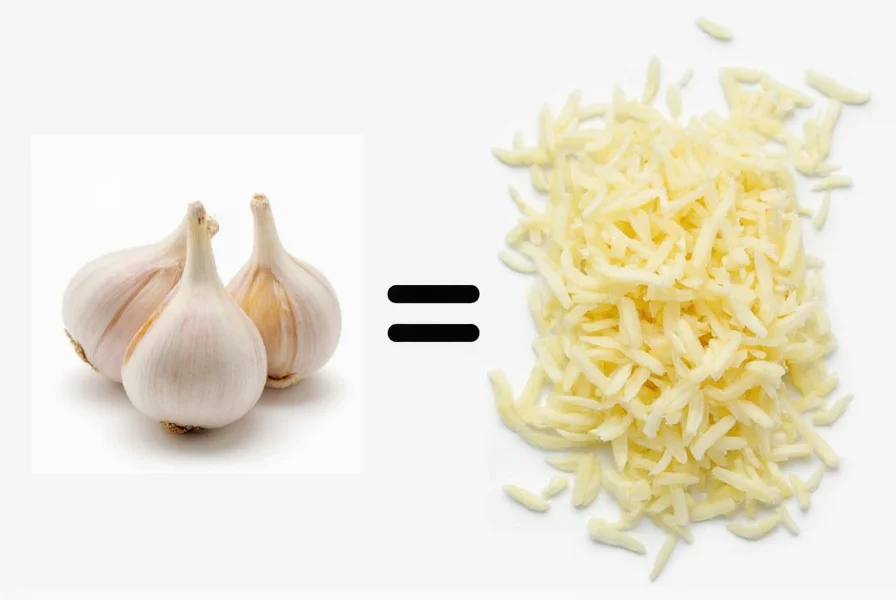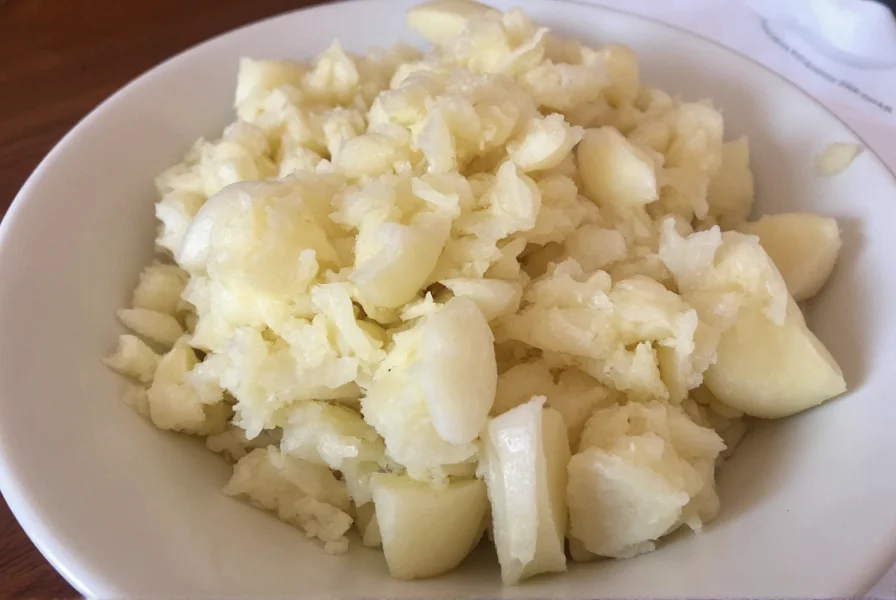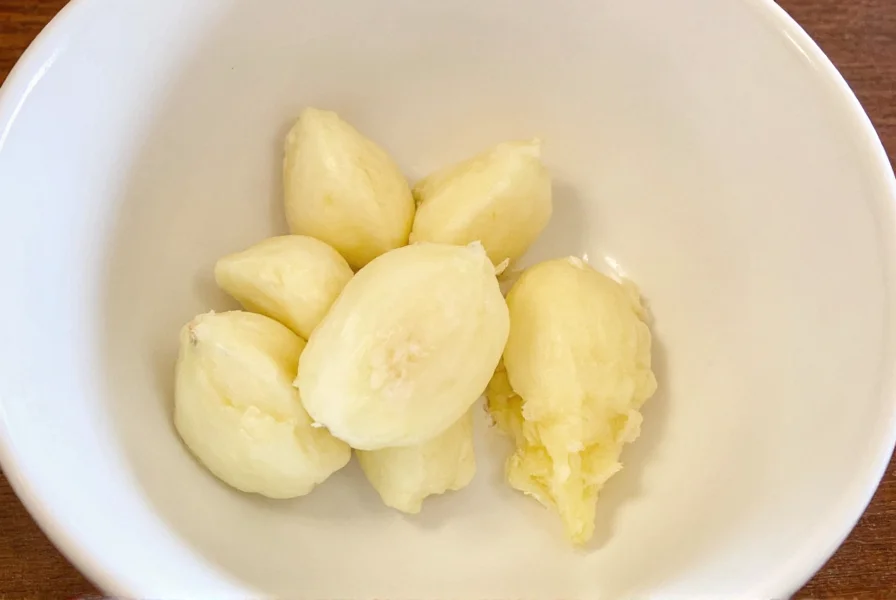Understanding Garlic Measurements for Perfect Cooking Results
When recipes specify "4 garlic cloves minced," understanding the exact volume conversion is crucial for achieving balanced flavors. Garlic intensity varies significantly based on preparation method, making accurate measurement essential for consistent cooking results.
Garlic Clove to Minced Conversion Chart
| Garlic Form | 4 Cloves Equivalent | Flavor Intensity |
|---|---|---|
| Whole cloves | 4 medium cloves | N/A |
| Fresh minced | 1½ tablespoons (24 ml) | High |
| Jarred minced | 1 tablespoon (15 ml) | Moderate |
| Garlic powder | ¾ teaspoon | Low-Moderate |
| Garlic paste | 1 tablespoon (15 ml) | Moderate-High |
Why Precise Garlic Measurement Matters
Garlic transforms dramatically when minced compared to whole or sliced forms. The enzymatic reaction that creates allicin—the compound responsible for garlic's distinctive flavor and aroma—intensifies with finer chopping. Four cloves minced releases significantly more flavor compounds than the same quantity sliced or left whole.
Chefs consistently emphasize that 4 garlic cloves minced to tablespoons represents a critical threshold in many Mediterranean and Asian cuisines. Exceeding this amount without adjustment can dominate a dish, while using less may fail to provide the necessary aromatic foundation.

Proper Technique for Mincing Garlic
Achieving the correct texture when preparing 4 cloves of garlic minced requires proper technique:
- Peel cloves by placing flat side of knife over clove and applying firm pressure
- Remove any green sprouts from center, which can impart bitterness
- Make thin slices in one direction, then rotate 90 degrees and slice again
- Rock knife repeatedly over garlic until uniformly fine (about 1/16 inch pieces)
- For maximum flavor release, sprinkle with pinch of salt and crush with side of knife
This method ensures you extract the full flavor potential from your 4 garlic cloves minced without burning during cooking. Finely minced garlic caramelizes quickly, creating complex flavor compounds that larger pieces cannot achieve.
Substituting Jarred or Prepared Garlic
When fresh garlic isn't available, understanding how much minced garlic equals 4 cloves from commercial products becomes essential. Jarred minced garlic typically contains preservatives that mellow its flavor profile. For equivalent flavor intensity:
- Use 1 tablespoon of jarred minced garlic instead of 1½ tablespoons fresh
- Add jarred garlic later in cooking process to preserve flavor
- Enhance with pinch of lemon zest to mimic fresh garlic's brightness
Many home cooks mistakenly use equal volumes of jarred and fresh garlic, resulting in under-seasoned dishes. The 4 garlic cloves minced to tablespoons conversion requires adjustment when using preserved alternatives.

Culinary Applications for 4 Cloves Minced
This specific quantity serves as the aromatic foundation for numerous classic dishes:
- Pasta aglio e olio (4 cloves minced forms the entire sauce base)
- Chicken marinades for 4-6 servings
- Vegetable stir-fries for family-sized portions
- Homemade tomato sauces for 1 quart yield
- Roasted vegetable seasoning blends
Professional chefs note that exceeding 4 garlic cloves minced in these applications typically requires balancing with additional acid (lemon juice or vinegar) or sweetness (caramelized onions) to maintain flavor harmony.
Storage Solutions for Leftover Minced Garlic
Preparing 4 cloves of garlic minced often yields more than needed for a single recipe. Proper storage maintains quality:
- Mix with equal parts olive oil and store in airtight container for up to 1 week
- Freeze in ice cube trays with oil for portion-controlled cooking
- Preserve in vinegar for salad dressing applications (changes flavor profile)
Never store plain minced garlic in oil at room temperature due to botulism risk. Refrigerated garlic-oil mixtures should be used within one week for safety.
Frequently Asked Questions
How many teaspoons equal 4 garlic cloves minced?
Four medium garlic cloves minced yield approximately 4½ teaspoons (22.5 ml). This equals 1½ tablespoons, which is the standard measurement used in most professional recipes requiring precise garlic quantities.
Can I substitute garlic powder for 4 cloves minced in recipes?
Yes, but use ¾ teaspoon garlic powder as substitute for 4 cloves minced. Remember that garlic powder has a different flavor profile—less sharp but more concentrated—so you may need to adjust other seasonings. Add powder early in cooking for maximum flavor integration.
Why does my recipe specify 'minced' rather than just 'garlic'?
Recipes specify 'minced' because garlic's flavor intensity directly correlates with particle size. Minced garlic releases maximum allicin, creating stronger flavor than sliced or whole cloves. Four cloves minced provides significantly more aromatic compounds than the same quantity sliced, affecting both taste and how quickly it cooks.
How can I reduce the strong taste if I accidentally used too much minced garlic?
If you've added too much minced garlic (exceeding the 4 cloves minced measurement), balance the dish by adding acid (lemon juice or vinegar), sweetness (honey or caramelized onions), or dairy (cream or yogurt). Diluting with additional base ingredients works for soups and sauces. For finished dishes, serving with plain starches like rice or bread helps moderate the intensity.











 浙公网安备
33010002000092号
浙公网安备
33010002000092号 浙B2-20120091-4
浙B2-20120091-4